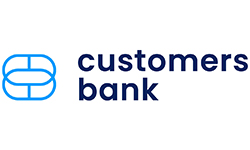
In the report, McKinsey identifies two challenges for banks. Firstly – the “great divergence” in value creation for banks between those that are high performing vs. those that are lower performing. Higher performing banks are taking a new approach – using technology to provide a personalized experience for customers, focusing on growth and customer wallet share, and are investing in partnerships that make them faster and more flexible.
The second challenge is timing. McKinsey states the first two years of an economic recovery cycle are typically when more than two-thirds of the next decade’s growth occurs. If 2022 is when the post-COVID economic recovery will begin, then the time for traditional banks to act is now to capitalize on this two-year window for growth.
While providing small and medium-sized enterprises (SMEs) with customized lending solutions has always been important, it hasn’t always been highly profitable because the average loan sizes for SMEs tend to be too small to offset the costs the banks incur in effectively servicing them. As McKinsey put it: “Finding the optimal balance between providing a great customer experience and managing the cost to serve has also proven to be difficult. As a result, many banks have not prioritized SMEs – forsaking the vast potential value and leaving many feeling their needs are ignored.” In situations where SME loans are too big for automated decision models but too small for the unit economics of the manual approach to make commercial sense, the market has been characterized by inflexible, slow, product-centric lending rather than fast, bespoke, customer-centric lending.
However, commercial lending is an area banks should be investing in. According to McKinsey’s report, SMEs represent a fifth of annual global banking revenues (approx. $850B) – a figure that is expected to increase by 7-10% annually over the next five years. It is perhaps for this reason why Daryl Moore, Chief Credit Executive and Senior EVP at one of our customers, Old National Bank, said: “We need to ensure we are future-proofed and not relying on the old ways of doing things. This is particularly true when it comes to commercial credit risk.”
McKinsey states that banks need to be collecting much more granular, real-time data and insights on customers to effectively price risk and service those customers’ needs. For those institutions that can’t do this internally, partnering will be key - “If a bank does not have the access or analytical capabilities to create an integrated strategic view on all risk categories and a clear map on return on risk, they will need to invest in building them, acquiring them, or seek partnerships to gain access to them.” According to Daryl Moore of Old National regarding our partnership: “As we began to speak with OakNorth about its product, we realized that if we had this software in place before the pandemic struck, we could have been much more strategic in addressing the risk in our portfolio.”
In the US last year, there were a record 22 weather and climate disasters with damages greater than $1 billion, which caused a combined $95 billion in damages. This year, it’s sadly been a similar story - the deep freeze in Texas, forest fires in California, heatwaves in Washington, flooding in New Jersey, tornados in Kentucky…the list goes on. Climate change is having a devastating impact on even the most resilient of businesses and is leading to changes in consumer behaviors and demands. Banks, therefore, need to be looking at how they can measure, manage and mitigate both the physical and transition risks of climate change in their commercial lending portfolios.
McKinsey states that banks "need to increase their innovation metabolic rate" – in other words, they need to be willing to try new things even if there’s a risk of failure. The banks that are willing to embrace innovation and ideation at speed are those which will ultimately succeed. Customers Bank, another bank OakNorth is working with, has done this and as a result, has grown assets from $250 million to $19 billion over the last decade, and was the sixth most active PPP lender in the US. Sam Sidhu, CEO and President of Customers Bank, said: “Many banks are reluctant to be first movers – it seems almost counterintuitive for a sector as heavily regulated as this – but in Customers Bank’s case, it’s provided us with a competitive advantage and the ability to compete with larger institutions.”
